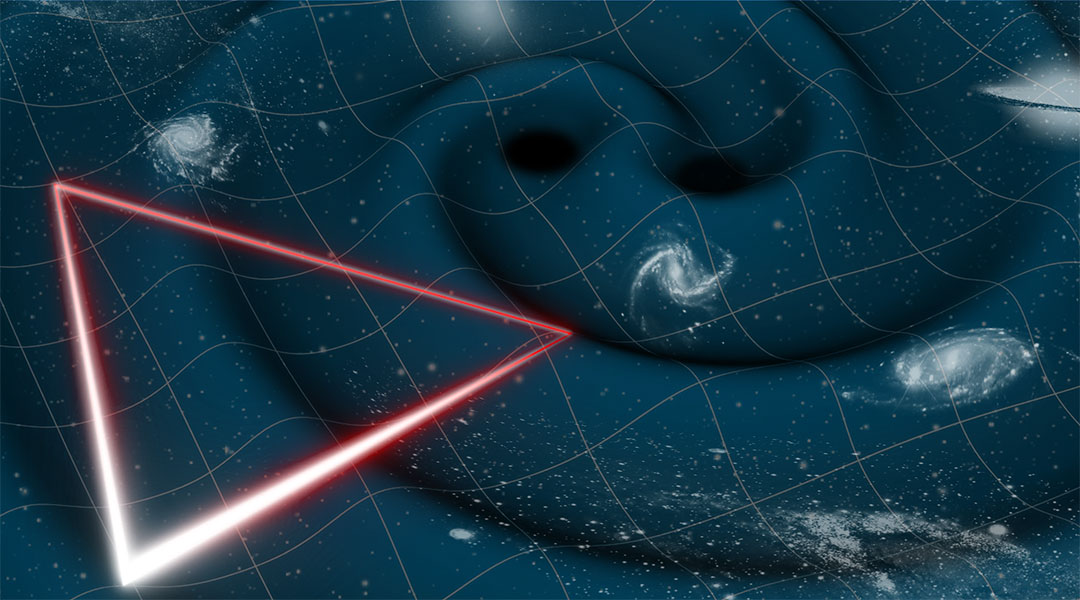On January 25, 2024, the European Space Agency’s (ESA) Science Programme Committee gave the go-ahead for the first space-based gravitational wave observatory called Laser Interferometer Space Antenna (LISA).
Gravitational waves are ripples in the geometry of space running through its fabric, and are produced by fast-moving massive objects. These waves carry vital information about their origins, providing scientists with insight into the properties of the celestial bodies that produced them.
“For centuries we have been studying our cosmos through capturing light,” said LISA project scientist Oliver Jennrich. “Coupling this with the detection of gravitational waves is bringing a totally new dimension to our perception of the Universe.”
LISA is designed to detect gravitational waves at much longer wavelengths than ground-based observatories, allowing researchers to explore supermassive black hole mergers and even phenomena from the Universe’s first moments.
Problems detecting gravitational waves on Earth
Current gravitational wave observatories, such as the American LIGO, the European Virgo, and the Japanese KAGRA, are ground-based and are based on the principle of interferometry — a measurement method that uses the interference of electromagnetic waves to extract information.
The observatories are made up of two perpendicular tunnels, each several kilometers long, through which light beams move back and forth, meeting in a special light detector. When a gravitational wave generated in deep space passes through an observatory, it affects the length of the paths traveled by the beams, changing the phase of the beam at the detector, signaling the wave’s arrival.
LIGO made history in 2015 when it detected gravitational waves for the first time in history, created from the merger of two black holes with masses of several tens of solar masses. Since then, with the help of this observatory and its counterparts around the world, researchers have been able to detect and study dozens of similar and new events.
However, despite these achievements, ground-based observatories have limitations. Namely, their size prevents them from detecting very long gravitational waves, such as those produced by the merger of supermassive black holes that are millions or even billions of times heavier than the Sun. These are of particular interest because they were emitted by cosmic events that occurred shortly after the Big Bang and carry information about the properties of the Universe in its first moments, which cannot be deduced out in any other way.
Going into space to see deeper
To overcome the detector size problem, ESA and NASA have developed the LISA space gravitational observatory, which is to trail the Earth in its orbit around the Sun. LISA will comprise three spacecraft forming a triangle with laser beams traveling between them over a distance of 2.5 million kilometers. Such a huge size of the detector promises exceptional sensitivity to long gravitational waves.
“LISA is an endeavor that has never been tried before,” explained LISA lead project scientist Nora Lützgendorf in an ESA press release. “Using laser beams over distances of several kilometres, ground-based instrumentation can detect gravitational waves coming from events involving star-sized objects — such as supernova explosions or merging of hyper-dense stars and stellar-mass black holes. To expand the frontier of gravitational studies we must go to space.”
“Thanks to the huge distance traveled by the laser signals on LISA, and the superb stability of its instrumentation, we will probe gravitational waves of lower frequencies than is possible on Earth, uncovering events of a different scale, all the way back to the dawn of time,” she continued.
The LISA observatory builds on the success of the LISA Pathfinder spacecraft, which was launched in December 2015 to test how precise the distances between each spacecraft can be measured, which is essential for LISA’s operation. By April 2016, ESA scientists confirmed that LISA Pathfinder’s accuracy surpassed the mission requirements.
As a result of these studies, ESA greenlit LISA, which is slated to commence construction in 2025, and aims for a 2035 launch aboard the European Ariane 6 heavy-lift rocket currently under development.
If everything proceeds as planned, within the next decade LISA could revolutionize our understanding of supermassive black holes and the galaxies that harbor them, phase transitions between different types of matter and energy in the early Universe, and deepen our knowledge of white dwarfs and neutron stars. Moreover, precise tracking of merging compact objects will enhance our understanding of the Milky Way’s structure.
“If we imagine that, so far, with our astrophysics missions, we have been watching the cosmos like a silent movie, capturing the ripples of spacetime with LISA will be a real game-changer, like when sound was added to motion pictures,” concluded Jennrich.
Feature image credit: ESA

















